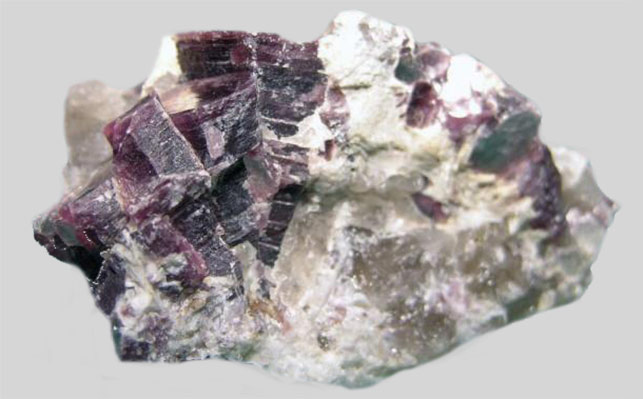Flotation, as one of the commonly used separation techniques in ore processing, plays an important role in mineral resource development. This article will explore the efficient flotation of lithium mica ore containing fluorite, helping readers understand and master this critical ore processing technology.

Chemical Composition: Lithium mica ore containing fluorite is a lithium-containing silicate mineral, consisting of silicon-oxygen tetrahedrons and a metastable hexagonal layer structure. Lithium ions are embedded in certain positions within the layer structure, giving it unique lithium-related properties.
Physical Characteristics: Lithium mica is typically dark grey to black in color and has good cleavage and flaky structure. Its hardness on the Mohs scale is approximately 2.5-3.5, making it relatively soft.
Lithium Content: Lithium mica is an important lithium ore, typically containing lithium in the range of 1-4%, sometimes reaching as high as 6-7%. This makes lithium mica economically valuable in lithium resource development.
1. Pre-processing of Ore: This includes ore crushing, grinding, and magnetic separation to improve the ore's amenability to flotation and enhance flotation performance.
2. Selective Flotation of Fluorite and Lithium Mica: Explain the differences in characteristics between fluorite and lithium mica during flotation, and how to achieve selective separation of fluorite and lithium mica by adjusting reagent ratios, selecting bubble flotation agents, and other parameters.
3. Flotation Equipment and Operating Parameters: Discuss appropriate flotation equipment selection and the impact of operating parameters such as feed concentration, reagent dosage, and agitation intensity on flotation performance.
1. Development and Application of New Flotation Reagents: Introduce research progress on new flotation reagents and explore their potential applications in the flotation of lithium mica ore containing fluorite.
2. Automation Control of the Flotation Process: Elaborate on the application of automated control systems in modern flotation processes, including automatic reagent dosing and real-time monitoring of flotation machine parameters to enhance flotation efficiency and stability.
3. Environmentally Friendly and Energy-saving Flotation Techniques: Introduce environmentally friendly and energy-saving flotation techniques, such as efficient utilization of flotation agents and the use of recycled water systems, to reduce environmental impact and improve energy utilization efficiency.
Through the introduction and analysis in this article, readers can gain a comprehensive understanding of the flotation process for lithium mica ore containing fluorite and have some guidance on how to efficiently and selectively separate this type of ore. In the future, with continuous technological advancements and innovations, it is expected that more breakthroughs and optimization solutions will emerge in the field of flotation of lithium mica ore containing fluorite, further driving the development of ore processing technologies, resource utilization, and sustainable development.